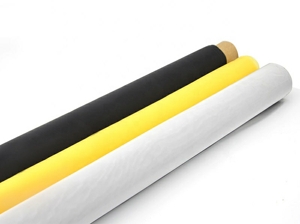Screen printing process analysis
Nov. 04, 2019
Screen printing refers to the use of a screen as the basis of the plate, and through the method of photosensitive plate making, the mesh of the screen printing plate can be used to transmit the ink through the ink, and the non-image part of the mesh can not be printed through the basic principle of the ink, made of screen printing plates with graphics.
The basic principle of screen printing is to use the basic principle of the screen printing part of the mesh to penetrate the ink, the non-image part of the mesh is not transparent to the printing. The ink is poured on one end of the screen printing plate during printing, and a certain pressure is applied to the ink portion on the screen printing plate by the squeegee blade while moving toward the other end of the screen printing plate. The ink is squeezed from the polyester printing mesh of the graphic portion onto the substrate by the squeegee during movement. Due to the viscous action of the ink, the imprint is fixed within a certain range. During the printing process, the squeegee is always in line contact with the screen printing plate and the substrate, and the contact line moves with the movement of the squeegee due to the screen printing plate and the substrate. A certain gap is maintained between them, so that the screen printing plate at the time of printing generates a reaction force against the squeegee by its own tension, and this reaction force is called a resilience force. Due to the resilience, the screen printing plate and the substrate are only in a moving line contact, and the other portions of the screen printing plate are separated from the substrate. The ink and the screen are broken and the printing is ensured to ensure the dimensional accuracy and avoid the dirty substrate. When the squeegee scrapes across the entire layout, it is lifted up, and the screen plate is lifted, and the ink is lightly scraped back to the initial position, which is a printing stroke.
Polyester Screen Printing Mesh
The advantages of silk screen:
(1) Not limited by the size and shape of the substrate. Generally, printing can only be carried out on a flat surface, and the screen printing can be printed not only on a flat surface but also on a specially shaped molded object such as a spherical curved surface, and the shaped object can be screen printed.
(2) The layout is soft and the printing pressure is small, and the polyester screen printing mesh for fabric is soft and elastic.
(3) The ink layer has strong covering power and can be printed on pure black paper with a strong three-dimensional effect.
(4) Suitable for all types of inks.
(5) Strong anti-rotation performance, which can make the gloss of printed matter unchanged. This allows for the printing of some stickers without the need for additional filming and other processes.
(6) Flexible printing methods
(7) Easy plate making, low price, easy to master technology.
(8) Strong adhesion.
(9) can be hand-printed silk screen or machine-printed.
(10) Suitable for long-term display, outdoor advertising is expressive.








